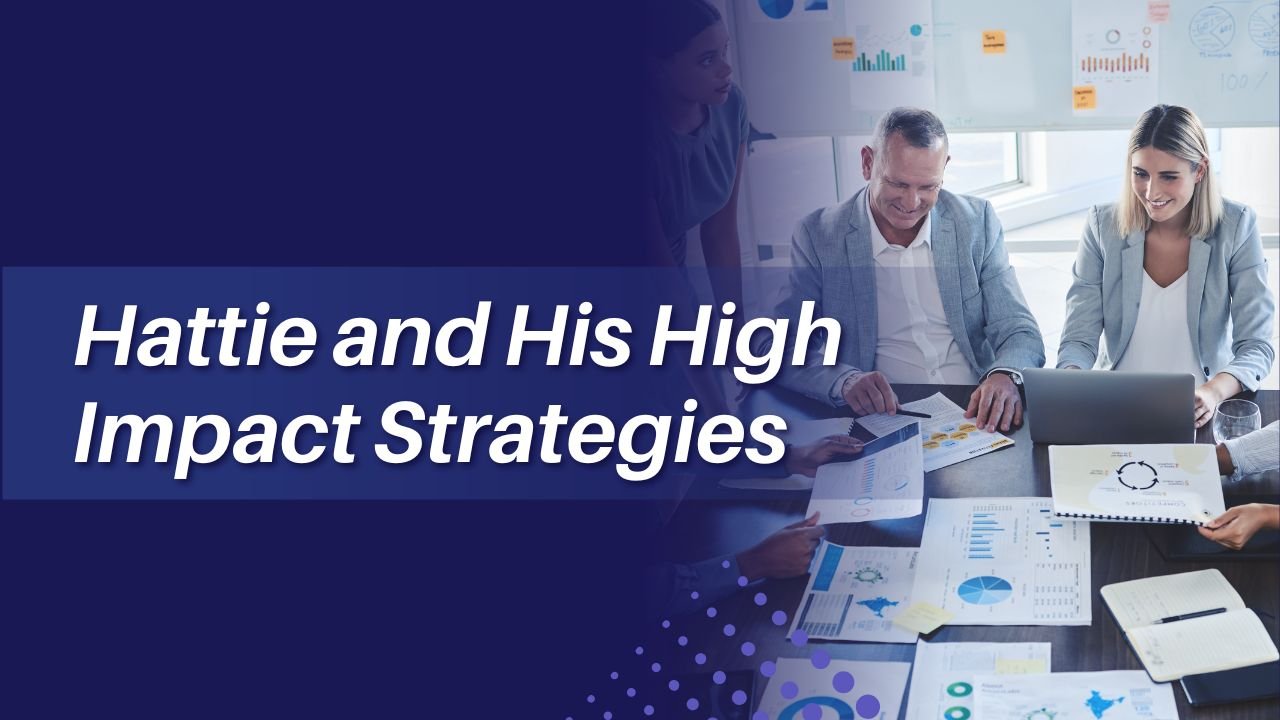John Hattie is one of the most well-known researchers in the field of education. His work has helped many teachers improve how they teach. He spent over 20 years studying what works best in classrooms. His research is based on thousands of studies and millions of students.
Hattie created a list of high impact strategies. These are the teaching methods that have the biggest effect on student learning. He ranked them by something called the effect size. The higher the effect size, the more powerful the strategy is.
This article explains who Hattie is, what his strategies are, and how teachers can use them in real classrooms.
Who Is John Hattie
John Hattie is an education researcher from New Zealand. He became famous for his book Visible Learning, first published in 2008. In this book, he looked at over 800 meta-analyses covering more than 300 million students.
His goal was simple: to find out what works best in education. Instead of guessing or following trends, he used data and research. This made his work very useful for teachers, school leaders, and education systems around the world.
What Is Effect Size
Hattie ranked strategies by effect size. But what does that mean?
Effect size is a number that shows how much a teaching method helps students improve. Hattie said that an effect size of 0.4 or higher means the strategy is better than average. He called this the hinge point.
Here’s a basic guide:
- Below 0.4: Not very strong
- 0.4 and above: Good impact
- Above 0.7: Very powerful
By using this scale, teachers can choose strategies that make the most difference.
Top High Impact Strategies by Hattie
Let’s look at some of Hattie’s top strategies that have a high effect size.
Collective Teacher Efficacy (Effect Size: 1.57)
This is the most powerful strategy on the list. It means that teachers believe they can improve student learning by working together. When teachers have strong teamwork and believe in their skills, students do better.
Schools can build this by:
- Having regular staff meetings
- Sharing teaching tips
- Supporting each other in planning
Self-Reported Grades (Effect Size: 1.33)
This strategy asks students to predict their own grades before doing a task. When students set goals for themselves, they try harder and become more aware of their progress.
Teachers can:
- Ask students to rate their understanding
- Let them set personal goals
- Help them reflect on their performance
Feedback (Effect Size: 0.72)
Feedback is more than just saying “good job.” It means giving clear guidance on what was done well and what can be improved. Good feedback helps students fix mistakes and grow.
Tips for strong feedback:
- Be specific
- Focus on the task, not the student
- Give it quickly and often
Teacher-Student Relationships (Effect Size: 0.72)
Positive relationships between teachers and students lead to better results. Students learn more when they feel safe and respected.
Ways to build better relationships:
- Listen to students
- Show kindness and fairness
- Know their interests and needs
Metacognitive Strategies (Effect Size: 0.69)
Metacognition means thinking about your thinking. When students learn how to plan, monitor, and reflect, they become stronger learners.
Teachers can teach metacognition by:
- Asking students to explain their thinking
- Encouraging goal setting
- Using checklists and journals
Direct Instruction (Effect Size: 0.59)
This is a structured teaching method where the teacher clearly explains the topic. It works best when students are learning new information.
Steps include:
- Setting learning goals
- Explaining with examples
- Practicing with feedback
Spaced Practice (Effect Size: 0.65)
Spaced practice means reviewing information over time instead of all at once. It helps students remember better.
Teachers can plan review sessions each week. Using short quizzes or flashcards also works well.
Classroom Discussion (Effect Size: 0.82)
This method lets students talk about what they are learning. It improves understanding and builds confidence.
To make discussions effective:
- Ask open-ended questions
- Let everyone speak
- Connect ideas to the lesson
Scaffolding (Effect Size: 0.82)
Scaffolding means giving support to students as they learn, then slowly removing it as they improve. This keeps tasks from feeling too hard.
Examples include:
- Breaking big tasks into small parts
- Giving sentence starters
- Working in pairs before solo tasks
Concept Mapping (Effect Size: 0.64)
This is a visual way to show how ideas connect. It helps students organize their thoughts and understand deeply.
Use it in:
- Science
- History
- Writing tasks
How Teachers Can Use Hattie’s Strategies
Teachers don’t have to use all the strategies at once. Start with one or two. Focus on what fits your subject and your students. Here’s a simple plan:
- Choose a strategy with a high effect size
- Try it in one lesson
- Watch how students respond
- Make changes if needed
- Share results with other teachers
Small changes can lead to big results over time.
Criticism and Caution
Some people say Hattie’s work is not perfect. They say:
- Some studies are old or mixed
- Effect sizes can be misunderstood
- Not all strategies work for all students
These points are true. But Hattie’s list is still a good guide. It shows what has worked for many teachers around the world.
